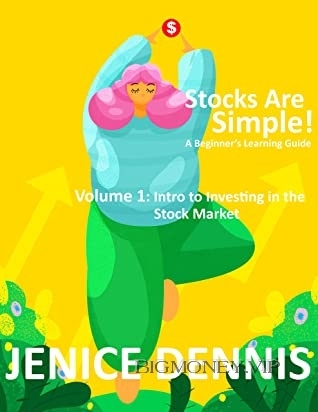
Chapter 1:
How to determine the goal of your portfolio
Before you begin to stock up on stocks, be sure that you are clear
on what you’d like to accomplish with your portfolio in the long-term.
You need to take the time to do this to ensure that you position
yourself to assume the amount of risk that you can handle, especially
working with what you can handle during the time frame set for the
goals that you need to reach. Doing this will take trial and error by way
of adjusting the amount of each asset you own to reflect the goals that
you have set for your portfolio. The determination of your investment
portfolio type and said investment portfolio’s performance depends on
your asset allocation. Seeing as though your portfolio is an overall
outlook of the assets that you own, such as stocks, bonds, mutual
funds, and other securities. The mix of securities you own will
determine whether your investment portfolio is super conservative or
highly aggressive. Neither is bad; it all depends on the type of investor
you would like to be. You may also revamp your portfolio whenever
you feel a change in direction is needed. Always remember to use
caution and go in with a plan for anything you do in the market to
avoid costly mistakes. In this series, we are concentrating on
individual stocks; therefore, if you choose to begin solely investing in
individual stocks, such as I did, then your portfolio will be considered
high risk and very aggressive.
With a very aggressive and high-risk portfolio, an investor is
investing in individual stocks more than any other security or solely in
individual stocks. These investors have high hopes for the longevity of
the companies they invest in and believe in the swings of the market.
To these investors, the swings of the market will cause what goes up to
come back down, but also, these investors believe that what goes down
may very well come back up. If you are invested in the right
companies, then the stock will experience downtrends a few times over
the years but will regain strength, surpass previous highs, and stabilize
as time goes on. That is what drives these investors to maintain
aggressive portfolios for many years. The main purpose of this type of
portfolio is capital growth by selecting companies that have a history
or a very good chance of growing each year at an impressive rate.
Basically, investors with this type of portfolio are looking to attain a
very high profit of returns with compounding dividends and the
possible growth of their investment in the long-term. This makes their
portfolio very volatile throughout the years, but these investors will not
fear this volatility. Always remember the higher the risk, the higher the
reward.
A step beneath having a very aggressive portfolio is having an
aggressive portfolio with medium risk. In this portfolio, you will
achieve more balance in your portfolio than a very aggressive portfolio
while still carrying a bigger percentage of individual stocks over other
investments. The beauty of this portfolio is investing in other securities
such as bonds, money markets, and so on, more than a very aggressive
investor would, which will help you to level out possible loss and still
see a high return of profits. This would be a great portfolio for younger
investors as they will reap the benefits of having very aggressive
investments that will possibly see great growth year after year while
also being safe with conservative investments to ensure some form of a
return is made.
Whereas someone who invests primarily in fixed-income securities
such as certain bonds while also investing in a few aggressive assets
such as individual stocks will have a portfolio that is considered
medium risk and conservative. These types of portfolios are great if
you would like to spend a shorter time in the market and make a
decent return of profits. These conservative investors add individual
stocks to their portfolios to offset inflation in their portfolios. This is
great because using the equity from certain investments to invest in
other investments keeps your wealth-building itself overtime and
protects you from inflation on your investments, which sabotages your
return of profits. An example is making a return profit of 10% on a
bond, but let’s say inflation went up 5% over the years as well. This
drops your return of profits from 10% profit to just 5% profit. Would
you rather take that 5% out of the market and assume a 5% loss or
Stocks Are Simple!: Volume 1: Intro to Investing in the Stock Market by Jenice Dennis




